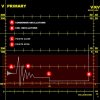hie there...
i know there a lot of threads on this forum about tachometers and all....my problem is however...hehe.....is that i have already build the circuit and its ready to test....but i don't exactly know where to connect the input signal to the engine....
hope anyone out there who have build a tachometer before help me on this.....
btw....my circuit is build on a LM2917 as a freq to voltage converter and the led's are drived by a LM3914 driver....
i know there a lot of threads on this forum about tachometers and all....my problem is however...hehe.....is that i have already build the circuit and its ready to test....but i don't exactly know where to connect the input signal to the engine....
hope anyone out there who have build a tachometer before help me on this.....
btw....my circuit is build on a LM2917 as a freq to voltage converter and the led's are drived by a LM3914 driver....

